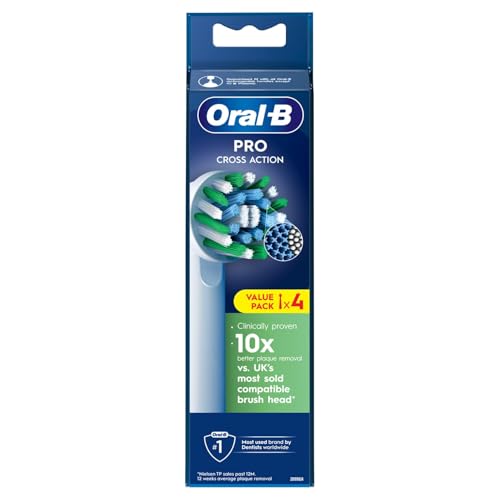
Maintaining a clean, effective toothbrush is one of the simplest yet most critical parts of your oral care routine. Over time, even the best toothbrushes lose their cleaning power — their bristles wear down, accumulate bacteria, and become less effective at removing plaque. Understanding when to replace your toothbrush or electric toothbrush head ensures your mouth stays as healthy as possible.
How Long Does a Toothbrush Last?

Most dental professionals agree: you should replace your toothbrush every three to four months. The American Dental Association (ADA) specifically recommends changing it sooner if the bristles become frayed or worn out. Frayed bristles can’t clean teeth properly and may even irritate your gums.
Signs It’s Time to Replace Your Toothbrush
- Bristles look bent, splayed, or discolored
- You’ve been sick recently
- Your toothbrush smells unpleasant
- The bristles feel rough against your gums
- You can’t remember the last time you changed it
Why Replacing Your Toothbrush Matters
As bristles wear out, they lose their ability to sweep away food particles and plaque effectively. A worn-out toothbrush can leave bacteria behind and contribute to gum disease, tooth decay, and bad breath.
Clinical studies show that a new toothbrush removes significantly more plaque than an old one, which helps maintain cleaner teeth and healthier gums.
Electric Toothbrush Heads: How Often Should You Replace Them?
For electric toothbrush users, the same rule applies — replace the brush head every three months, or sooner if it shows signs of wear. Since electric toothbrushes use oscillating or sonic motion, worn bristles not only clean less effectively but can also feel abrasive on sensitive gums.
Why Electric Brush Heads Need Regular Replacement
- Micro-vibrations become less effective as bristles wear down
- Plaque removal efficiency drops over time
- The brush head can harbor bacteria, especially around the base
- Maintaining fresh bristles supports consistent gum health
Understanding Brush Head Technology
Not all electric toothbrush heads are created equal. Advanced options like the Oral-B iO replacement brush heads combine round brush design with micro-vibration technology, simulating a professional dental cleaning feeling at home.
Benefits of Using Modern Brush Head Designs
- 360° plaque removal: Round brush heads reach between teeth better
- Pressure sensors: Prevent overbrushing and gum recession
- Smart indicators: Some brush heads fade in color to remind you it’s time to replace them
- Customized bristles: Options for sensitive gums, whitening, or deep cleaning
ADA Recommendations for Toothbrush Care
According to the ADA’s Statement on Toothbrush Care (Council on Scientific Affairs, 2005):
- Replace your toothbrush every 3–4 months
- Store your toothbrush upright and allow it to air dry
- Never share toothbrushes — bacteria and viruses can easily spread
- Rinse thoroughly after each use
These small habits make a big difference in preventing oral infections and maintaining fresh breath.
When to Replace Sooner Than Three Months
Certain conditions require more frequent replacement:
- After illness: Viruses and bacteria can linger on bristles
- Excessive wear: If you brush too hard, bristles fray faster
- Gum disease or bleeding gums: Keeping a sterile brush helps healing
- Travel exposure: If your toothbrush isn’t stored hygienically
Electric Toothbrush Subscription Services
Keeping track of replacements can be easy with a subscription plan, such as the Oral-B Refill Subscription. This ensures new brush heads arrive at the right time, helping you stay consistent with replacement schedules while saving money in the long run.
How to Dispose of Old Toothbrushes Responsibly
While toothbrushes aren’t usually recyclable through curbside programs, some brands and dental offices participate in toothbrush recycling programs.
Alternatively:
- Use old toothbrushes for cleaning small surfaces (like jewelry or grout)
- Donate to recycling initiatives like TerraCycle
Choosing the Right Toothbrush for You
When buying your next toothbrush or brush head, consider:
- Bristle softness: Soft bristles are gentler on enamel and gums
- Head size: Smaller heads reach tight spaces better
- Handle grip: Ergonomic designs improve comfort and control
- Special needs: Choose heads designed for braces, sensitivity, or whitening
Comparing Manual vs. Electric Toothbrushes
| Feature | Manual Toothbrush | Electric Toothbrush |
|---|---|---|
| Cleaning motion | Manual effort | Oscillating or sonic motion |
| Effectiveness | Good with proper technique | Clinically proven superior plaque removal |
| Replacement frequency | 3–4 months | Brush head: 3 months |
| Cost | Lower upfront | Higher, but better long-term results |
| Ideal for | Simplicity | Precision and gum health |
How to Remember When to Replace
Simple reminders make all the difference:
- Set a calendar alert every 3 months
- Use a smart toothbrush app that tracks usage
- Buy toothbrushes in multi-packs for convenience
- Look for color-fade bristles that visually indicate wear
Maintaining Oral Hygiene Beyond Brushing
Brushing is just one part of oral care. Complement your brushing routine with:
- Flossing daily
- Using an antibacterial mouthwash
- Regular dental checkups every 6 months
- Cleaning your tongue to remove odor-causing bacteria
Conclusion
Replacing your toothbrush or electric toothbrush head every three months is not just a recommendation—it’s a cornerstone of effective oral hygiene. Fresh bristles mean cleaner teeth, healthier gums, and fewer dental issues down the line. Whether you’re using a manual brush or an advanced model like the Oral-B iO, consistency in replacement keeps your smile bright and your oral health at its best.
FAQs
1. Can I use my toothbrush longer than 3 months if it still looks fine?
No. Even if the bristles appear intact, bacteria buildup and invisible wear reduce cleaning efficiency.
2. What if I brush twice daily—should I replace it sooner?
Yes, frequent use may require replacement every 8–10 weeks.
3. Are electric toothbrush heads interchangeable between brands?
Generally not. Always use heads designed specifically for your toothbrush model.
4. Can boiling or sanitizing extend a toothbrush’s life?
It may reduce bacteria, but won’t restore worn bristles. Replacement is still essential.
5. What happens if I don’t replace my toothbrush?
Expect reduced plaque removal, gum irritation, and increased risk of cavities and bad breath.



